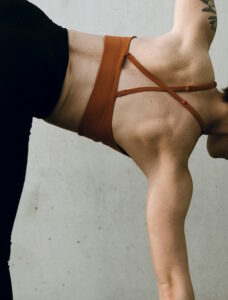
When it comes to Pilates, the focus is often on the physical exercises and their transformative benefits. However, equally important is the role of nutrition in achieving optimal results. Proper nutrition not only fuels your body for Pilates sessions but also contributes to your overall health and well-being. In this guide, we will explore the essential aspects of Pilates nutrition, from what to eat before and after a Pilates session to the broader impact of Pilates on your health, weight loss, and macronutrient utilization.
What should I eat if I do Pilates?
The foods you consume before and after a Pilates session can significantly impact your performance, recovery, and overall experience. Here’s a breakdown of what to consider:
· Before Pilates:
· Carbohydrates: Consuming complex carbohydrates (e.g., whole grains, fruits, vegetables) 1-2 hours before your Pilates session can provide sustained energy during your workout.
· Protein: Including a small amount of protein (e.g., yogurt, nuts, lean meats) can help with muscle repair and maintenance.
· Hydration: Adequate hydration is crucial. Drink water throughout the day and consider sipping on water during your session to stay hydrated.
· After Pilates:
· Protein: A protein-rich snack or meal after your Pilates session aids in muscle recovery and repair.
· Carbohydrates: Replenishing carbohydrates helps restore glycogen levels, providing energy for your next workout.
· Hydration: Continue to drink water to replace fluids lost during exercise.
Remember that individual dietary preferences and tolerances play a role, so choose foods that work best for you. Experimenting with different pre-workout and post-workout snacks or meals can help you determine what optimizes your Pilates performance.
Does Pilates make you healthier?
Yes, Pilates contributes to improved overall health in several ways:
*1. Physical Fitness: Pilates enhances core strength, flexibility, balance, and posture. These improvements in physical fitness translate into reduced risk of injuries and musculoskeletal issues.
*2. Mental Well-Being: The mind-body connection fostered by Pilates promotes mental clarity, stress reduction, and increased mindfulness. These factors contribute to improved mental health.
*3. Weight Management: While Pilates may not be primarily a weight loss exercise, it can help with weight management by increasing muscle mass and metabolism.
*4. Enhanced Quality of Life: Pilates exercises can enhance functional fitness, making everyday movements easier and more comfortable. This contributes to an overall better quality of life.
*5. Injury Prevention: Pilates emphasizes proper alignment and movement patterns, reducing the risk of overuse injuries and imbalances that can result from repetitive activities.
*6. Improved Circulation: Pilates movements stimulate blood flow and circulation, contributing to better oxygenation of tissues and overall cardiovascular health.
Is Pilates a good way to lose weight?
Pilates is not typically considered a primary weight loss method like high-intensity interval training (HIIT) or aerobic exercise. However, it can be a valuable component of a weight loss plan for several reasons:
*1. Muscle Toning: Pilates builds lean muscle mass, which can increase metabolism and calorie burn, contributing to weight management.
*2. Increased Activity: Engaging in regular Pilates sessions adds to your overall physical activity, helping to create a calorie deficit if combined with a balanced diet.
*3. Mindful Eating: The mindfulness developed in Pilates can extend to your eating habits, promoting healthier choices and portion control.
*4. Stress Reduction: Pilates reduces stress, which can help prevent stress-related overeating and emotional eating.
While Pilates alone may not result in rapid weight loss, it can be a valuable tool when combined with a balanced diet and other forms of physical activity.
Does Pilates burn fat or carbs?
Pilates primarily burns calories, and the proportion of calories burned from fat and carbohydrates depends on several factors:
*1. Intensity: Higher-intensity Pilates sessions may burn a greater proportion of carbohydrates for energy.
*2. Duration: Longer Pilates sessions may lead to a higher proportion of fat burning as the body taps into its fat stores for sustained energy.
*3. Fitness Level: Well-conditioned individuals may have a more efficient fat-burning capacity during Pilates.
Ultimately, the specific breakdown of calorie sources varies among individuals and can change throughout a Pilates session. However, the primary focus of Pilates is on improving core strength, flexibility, and overall physical conditioning rather than maximizing calorie burn.
In summary, Pilates nutrition plays a critical role in fueling your Pilates sessions and optimizing your overall health and well-being. Consuming a balanced diet with a mix of carbohydrates and protein before and after your Pilates workouts can enhance your performance and recovery. Pilates contributes to better health through improved physical fitness, mental well-being, weight management, and injury prevention. While it may not be a sole weight loss method, it can be a valuable component of a weight loss plan. Pilates primarily burns calories, and the ratio of fat to carbohydrate burned varies based on factors such as intensity, duration, and individual fitness level. Incorporating Pilates into your lifestyle can lead to a healthier, more balanced, and more vibrant you.